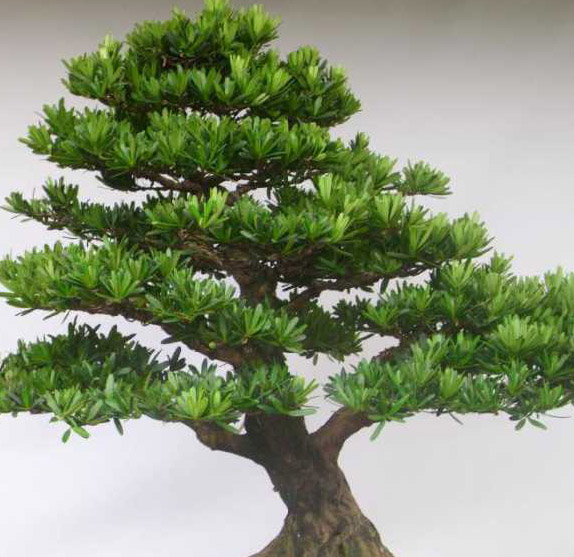How to cultivate potted sunflower
Loose-tailed sunflower is evergreen shrub or small Arbor of Palm family. Tufted, often branched from the ground; pinnately compound leaves cleft, expanding and slightly curved, lobes 40-60 pairs, arranged in two rows, smooth and bright green. Leaflets linear or lanceolate, ca. 30 cm long and 1 cm wide.
Sexual preference for warm, humid and semi-overcast environment, fear of cold, suitable for loose, humus-rich soil. Potted sunflower can be cultivated with rotten leaf soil, peat soil plus 1x5 river sand or vermiculite and a small amount of base fertilizer. During the growing season, the basin soil should be kept moist and thin fertilizer should be applied once or twice a month. Loose-tailed sunflower is more shady, usually put in the hall corridor or more spacious indoor with scattered light training, that is, it can grow healthily. It can also be placed in a dark room for 3 to 5 weeks, and then moved to a brightly lit place.
Loose-tailed sunflower is weak in cold tolerance and weak, and when it is put outdoors, the northern area enters the house from late September to early October. After entering the room, the room temperature should be kept above 15 degrees Celsius at night and 23-25 degrees Celsius in daytime during the winter. If the room temperature is lower than 5 degrees Celsius for a long time, you will suffer from cold damage. The main cause of death of loose-tailed sunflower in winter and spring in the north is caused by cold injury caused by too low temperature. Watering in winter should be properly controlled, and it is best to spray and wash secondary branches and leaves with warm water every 10 days or so to keep the leaves smooth.

Loose-tailed sunflower, also known as yellow coconut, Aoi Murasaki, etc., is a tufted evergreen shrub or small tree of the genus Palmaceae. In tropical courtyards, more ornamental trees are planted in grasslands, shade and houses. In the north, the main potted plants are used as high-grade potted foliage plants decorating living rooms, restaurants, conference rooms, family rooms or balconies. Let's take a look at how to raise potted sunflower.
Growth habits of sunflower
Loose-tailed sunflower is a tropical plant, which likes warm, humid and semi-shady environment. The cold tolerance is not strong, the leaves turn yellow when the temperature is below 20 ℃, the lowest temperature for overwintering is above 10 ℃, and about 5 ℃ will freeze to death. South China can still be cultivated in the open field, and the Yangtze River basin and its northern areas should be maintained in the greenhouse. The growth is slow in the seedling stage, and then grows rapidly. Suitable for loose, well-drained and fertile soil. Thick branches and leaves, evergreen all the year round, strong shade tolerance.
The Propagation method of Sunflower
1. Ramet: loose-tailed sunflower can propagate all the year round. Select the plant with more tillers in the basal part around April, remove part of the old basin soil, and divide it into several clumps from the base joint with a sharp knife. The wound needs to be disinfected with plant ash or sulfur powder. Each clump should not be too small, there should be 2 to 3 plants and retain the root system, avoid long-term exposure under strong light, appropriate watering, curing at 20: 25 ℃, the recovery is faster.
2. Sowing: if sunflower can get seeds, it can wash the pulp of the harvested fruit, soak the seeds in 35 ℃ warm water for two days, then sow them with germination and transplant, spray foliar water on sunny days, but generally grow slowly in juvenile and grow rapidly after adulthood.
How to raise potted sunflower?
1. Soil: slightly acidic soil should be selected for indoor potted sunflower, sandy loam with high humus content should be selected in the north, and rotten leaf soil, peat soil plus 1cm 3 river sand and part of base fertilizer can be used to prepare culture soil. The growth of tiller buds depends on the rhizome, and when potted, it is a little deeper than the original one, so as to avoid better rooting of new buds. The period from May to October is the prosperous period of its growth, so it is necessary to provide sufficient water and fertilizer conditions.
2. Upper plate: when installing the pot, the loose-tailed sunflower seedlings are placed in a coarse-grained substrate 2 cm thick as a filter layer at the bottom of the basin, and sprinkled with a fully mature organic fertilizer as a base fertilizer with a thickness of about 1 cm to 2 cm, then covered with a thin layer of matrix, about 1 cm thick, and then put in the plant to separate the fertilizer from the root system and avoid root burning.
3. Watering: watering should follow the principle of dryness and moisture penetration according to the season, more watering should be appropriate in the dry and hot season, and watering should be controlled in low temperature, overcast and rain. In the northern region, especially where there is more salt and alkali in the water, attention should be paid to the frequent use of black alum to regulate soil acidity. Always keep the basin soil moist at ordinary times. Summer and autumn high temperature period, but also often maintain a higher air humidity around the plant, but avoid basin soil stagnant water, so as not to cause rotten roots.
4. Fertilization: loose-tailed sunflower is in its vigorous growth period from May to October, so it is necessary to provide sufficient water and fertilizer conditions. Generally, rotten liquid fertilizer or compound fertilizer is applied every 1-2 weeks to promote the vigorous growth of the plant, the leaf color is thick green, fertilize less or not in autumn and winter, and keep the basin soil dry and wet at the same time.
5. Lighting: sunflower likes semi-shade, 50% shade in spring, summer and autumn, and direct sunlight is the most taboo. Even if exposed in a short time, the leaves will be scorched yellow and it is difficult to recover. Indoor cultivation and ornamental should be placed in a place with strong scattered light. It can also withstand the dark environment, but it is better to move to outdoor light on a regular basis to facilitate recovery and maintain a higher viewing state.
6. Temperature: loose-tailed sunflower likes to be warm, and the optimum growth temperature is 20-35 ℃. If more than 35 ℃ or less than 10 ℃, the foot leaves will change from green to yellow if there is a little improper cultivation and management. It is necessary to do a good job of heat preservation and anti-freezing in winter, generally about 10 ℃ can survive the winter safely, if the temperature is too low, the leaves will turn yellow, the leaf tip will dry up, and lead to root damage, affecting the growth of the coming year.
How to maintain potted sunflower maintenance methods
When breeding loose-tailed sunflower, in addition to be able to master the soil, fertilization, watering and other methods, but also need maintenance to ensure that it can grow beautiful. How to maintain loose-tailed sunflower? The following is the editor to introduce you to the relevant maintenance methods.
Loose-tailed sunflower, also known as coconut. Loose-tailed sunflower likes to be warm, avoid cold and tolerate shade. The room temperature is above 8 ℃ to survive the winter safely. Below this temperature, the branches and leaves turn yellow and fall off, and the whole plant will freeze to death in severe cases. Usually, loose-tailed sunflower can be placed for a long time in strong light, and well-ventilated indoor cultivation and viewing, but avoid outdoor exposure to the scorching sun. The suitable temperature for growth is 20-35 ℃, and in the vigorous growth season, liquid nitrogen fertilizer is mainly applied because of topdressing 1-2 times a month.
Can be regularly turned every 2 years to change soil, to loose and fertile, well-drained humus soil is appropriate, which can add appropriate amount of perlite and vermiculite to increase air permeability.
Watering is based on the principle of "dry and wet". During the peak growth period, water should be replenished in time to keep the basin soil moist, and water can be watered once in the morning and evening in summer. attention should be paid to forbidding long-term stagnant water in the basin to prevent rotting roots. In hot summer, a certain amount of water can be sprayed on the surface of plant branches and leaves or on the ground to increase air humidity.
The main cause of death of northern loose-tailed sunflower in winter and spring is low temperature. Hot summer at noon, should be its shading measures, avoid direct sunlight, even if a short time exposure will also cause the leaves scorched yellow, it is difficult to restore. Put it in a bright place indoors, too dark is bad for the growth of sunflower.
How to maintain loose-tailed sunflower? In fact, it is not difficult to maintain the sunflower, but we need to remind everyone that the maintenance of the sunflower is not a matter of one or two days, but needs to be persisted for a long time in order to bring good results. Pay special attention to this knowledge when maintaining the sunflower.
- Prev

How to maintain potted Rohan Pine
Luohansong is an evergreen shrub of the family Pine. The stem is straight and straight. New branches and leaves sprouted in spring and autumn, with dense internodes and many branches. Leaf strips lanceolate, bright oil-green, alternate, spirally arranged and growing. Sexual preference for warm, moist and semi-shady environment, suitable for fertile, moist, well-drained soil
- Next

What should be paid attention to in potted pocket coconut
Pocket coconut, famous sleeve, rare brown and so on. It is a small evergreen dwarf shrub of Palm family. Plant shape short; stem solitary, erect unbranched, dark green, with irregular ring pattern above; leaf pinnatifid, divided into lanceolate, dark green, leathery, glossy; flowers yellow, globular, blooming in late spring and early summer
Related
- Fuxing push coffee new agricultural production and marketing class: lack of small-scale processing plants
- Jujube rice field leisure farm deep ploughing Yilan for five years to create a space for organic food and play
- Nongyu Farm-A trial of organic papaya for brave women with advanced technology
- Four points for attention in the prevention and control of diseases and insect pests of edible fungi
- How to add nutrient solution to Edible Fungi
- Is there any good way to control edible fungus mites?
- Open Inoculation Technology of Edible Fungi
- Is there any clever way to use fertilizer for edible fungus in winter?
- What agents are used to kill the pathogens of edible fungi in the mushroom shed?
- Rapid drying of Edible Fungi

